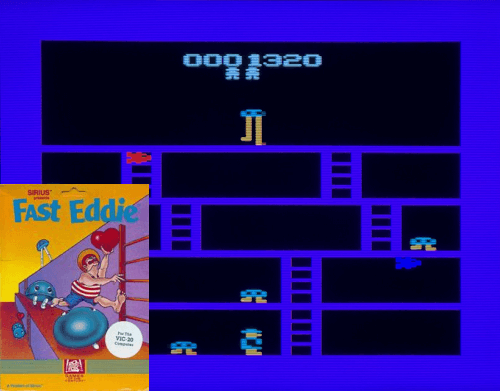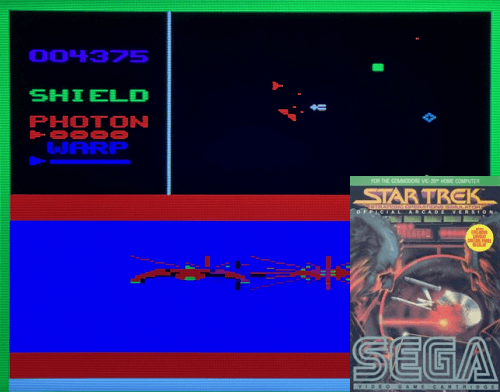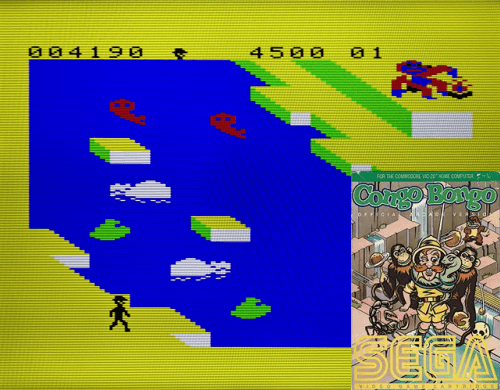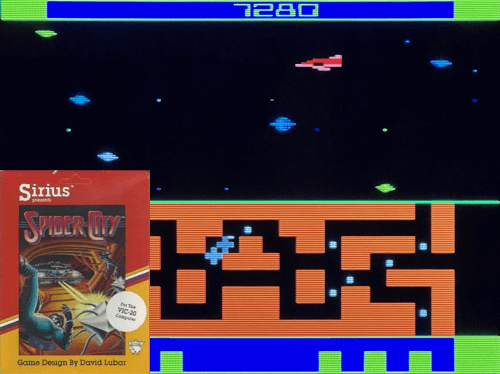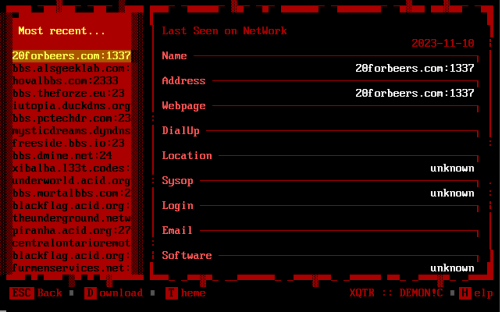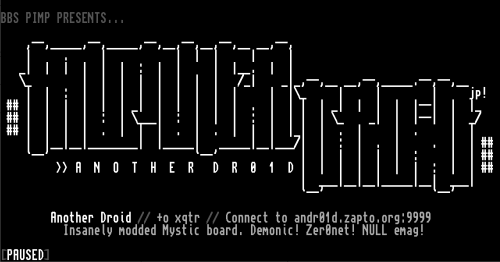This is an edited version of a spur of the moment message I posted to Zer0net the day I found out, updated and posted here for posterity.
By now, most of the people reading have already seen the news, or at the very least, knew that Hawk had been struggling with both heart issues and liver cancer for some time now. If not, I wanted to pass on the very sad news that on June 27th, the legendary Brian “Hawk” Hubbard passed on. I didn’t know Hawk as well as many people in the BBS and particularly art scenes did, so forgive me for not being able to write a legitimate eulogy, but I still feel compelled to say more.

Hawk, better known to most in the BBS scene back then as “Captain Hood“, and I crossed paths quite a few times in the late 90s and early 2000s. I recall email exchanges in which he wanted help setting up his own echomail network, locating some old esoteric Illness releases, that kind of thing. We always had a friendly, mutually respectful relationship, though it was always pretty casual so I can’t say he and I ever got to know each other well. He was, as I mentioned, already a bit of a legend by then; an absolute fixture in scene IRC channels like #acid, and his name was constantly popping up in group member and distro lists, greets on ANSI and ASCIIs, and in zines and e-mags for as long as I can remember, and truthfully, I don’t expect that to change even now.
Hawk was an ardent supporter of the scene, often encouraging and complimenting artists and supporting art groups, and in the post 2000s scene he was almost always in the mix of whatever new and exciting group or other project was in the works. I believe he was actually quite instrumental in making sure the BBS and art scenes, which had been diverging since the 1990s, remained undeniably linked. He was a (if not the) dude who artists loved to draw for (I mean, who else has multiple tribute pieces like the ones shown here?!) yet his involvement had always centered around his BBSes. This seemed to be the case even in the 1990s, looking at all of the amazing art he’d gathered and how many different affils his board had even back then. In the post 2000s scene, however, this got some of the top tier ANSI artists, who largely stopped taking requests or otherwise drawing more utilitarian art, to draw for ACTUAL BBSes again, which I’m sure also rippled out to influencing other artists to do pieces for other boards too.
Outside of the art scene, Hawk is known by many today for his impressive fleet (or armada, as he called it) of BBSes. He had multiple different systems over the years, each completely decked out with themed ANSIs and ASCIIs, including sick Oblivion/2 and PCBoard setups, and a RIPscrip focused Searchlight system. I remember calling the original Piranha when he first put it up on telnet full-time (and possibly earlier via dial-up, though my memory is a bit hazy there) and recall being absolutely floored by all of the amazing art he’d gathered and the modding he’d done. He later gained a bit of much deserved notoriety outside of the scene after 2013 when he launched Piranha: Under the Black Flag (AKA, just “Black Flag“) which was timed perfectly to gain notice from the growing retro computing scene, with Black Flag often showing up in various articles with lists of “must call” telnet BBSes. Black Flag was frequently at the #1 spot.
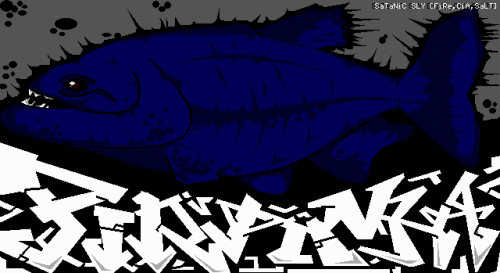
It was after a relaunch of the original Piranha around 2011 that Hawk joined Zer0net. With countless chats that usually started with troubleshooting or otherwise tweaking his echomail setups, this is when Hawk and I got to know each other a bit better. I’m proud to say that just about every system in Hawk’s mighty armada was also a member of Zer0net at one time or another. In fact, as I write this, his boards still occupy a ridiculous 4 slots in our node list! 😅
I should also definitely mention that all 4 of those BBSes that Hawk still had up (the aforementioned Piranha and Black Flag, plus Acid Underworld and The Black Tower) actually remain up, and hopefully will remain up in memorial to Hawk for quite sometime, as Hawk had moved away from hosting his BBSes locally with the help of Slime City BBS SysOp m00p. While it won’t be quite the same to call one of his BBSes without an extremely good chance of having Hawk break into chat with you, I think the whole scene is happy to know that his BBSes aren’t going to just unceremoniously disappear. Thanks m00p!

Of course, there’s a whole lot more to Hawk than I can really go into, most notably his life as a fiddle player and member of various bands, and all of the travels and other adventures he had around those times. Smooth actually created an echo on Araknet called “True Adventures” exclusively for Hawk to share all of those wild stories and otherwise wax philosophical about life. I only wish he used it more, as some of the few stories he had posted there and elsewhere were pretty damn incredible.
Likewise, I wish I knew more about Hawk and his history with the scene. How in the hell did he go from a fiddle player in Indiana to the SysOp of one of the sickest BBSes in Florida? I’d love to know more about how he first got into computers, his early days as a BBSer, and how he wound up being associated with the underground scene, and particularly ACiD Productions. As I mentioned briefly back in my 2022 update post, I’d been planning to do sort of mini-BBS reviews, complete with interviews with SysOps for this blog, and still hope to someday, but I’d always intended for Hawk and his fleet of awesome BBSes to be my first subject. Hawk and I talked a bit about it early last year, and when I first heard about him getting sick back in January, I scrambled to put together a lengthy Q&A style interview for him to work on whenever he felt up to it. He definitely seemed into the idea, but no doubt had much higher priorities in the months since, and I’m sure his energy was sapped much of the time from fighting the good fight on top of that. The truth is, he certainly didn’t need my help being immortalized in the scene!
Rest in Peace, Captain! You will not be forgotten.
—
1. we-a_toast_to_the_captain.ans by Misfit and Ungenannt from Blocktronics Acid Trip (2013)
2. ss-pira!.rip by Satanic Sly from CiA #37 (1996)
3. wz – the fiddler – under the black flag.ans by Whazzit from Blocktronics Blockfury (2015)
